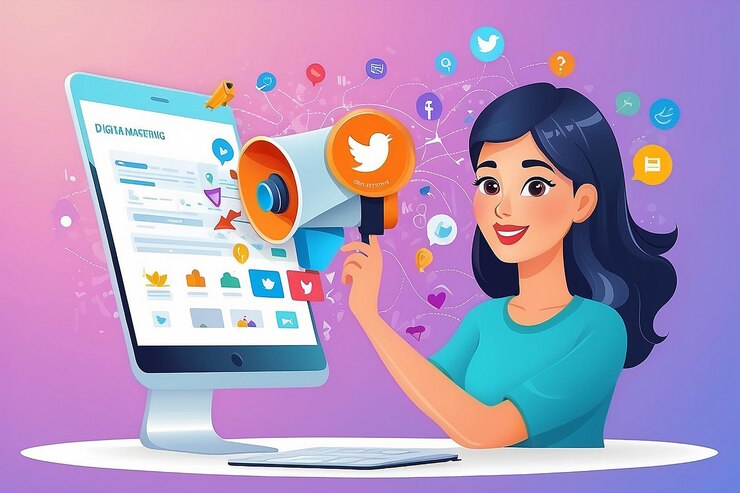Inside Influencer Marketing: Strategies, Trends, and Case Studies

Inside Influencer Marketing, we delve into the dynamic realm where digital influence meets brand promotion. As businesses increasingly turn to influencers to amplify their reach, understanding the strategies, trends, and case studies within this domain becomes paramount. From identifying the right influencers to navigating the intricacies of collaboration, we explore every facet. Moreover, the role of influencer marketing platform cannot be overstated, serving as invaluable tools for connecting brands with suitable influencers and streamlining campaign management. Join us as we unravel the complexities and opportunities inherent in influencer marketing, offering insights to propel your brand’s success in this ever-evolving landscape.
1. Influencer Marketing Strategies:
A. Identifying Target Audience and Influencers:
Inside influencer marketing, strategic planning is essential for success. Firstly, identifying the target audience and suitable influencers is crucial. Understanding the demographics, interests, and behaviors of the audience helps in selecting influencers who can authentically connect with them.
B. Collaboration and Content Creation:
Collaboration and content creation form the core of influencer marketing strategies. Working closely with influencers to develop engaging content that resonates with the audience is key. Whether it’s sponsored posts, product reviews, or creative campaigns, collaboration ensures the message aligns with the brand’s values and the influencer’s authentic voice.
C. Campaign Management and Execution:
Effective campaign management and execution are vital for maximizing results. This involves setting clear objectives, establishing timelines, and monitoring performance metrics throughout the campaign. Regular communication and feedback between the brand and influencers ensure that the campaign stays on track and delivers the desired impact on the target audience.
2. Emerging Trends in Influencer Marketing:
A. Micro-Influencers and Niche Markets:
Inside influencer marketing, we witness a dynamic landscape shaped by emerging trends. Firstly, micro-influencers and niche markets are gaining traction, offering highly engaged audiences and specialized content. Brands are increasingly recognizing the value of partnering with influencers who have smaller but more dedicated followings.
B. Video Content and Live Streaming:
Secondly, video content and live streaming have become dominant forces in influencer marketing. Platforms like Instagram, TikTok, and YouTube provide fertile ground for influencers to connect with their audiences in real-time, fostering deeper engagement and authenticity.
C. Authenticity and Transparency:
Finally, authenticity and transparency remain paramount. Audiences crave genuine connections and transparent relationships between influencers and brands. As a result, influencers who prioritize authenticity and disclose partnerships openly tend to build stronger, more trusting communities. Brands that align with these values not only enhance their reputation but also foster long-term loyalty among consumers. In this ever-evolving landscape, staying abreast of these trends is crucial for brands seeking success in influencer marketing.
3. Case Studies of Successful Influencer Marketing Campaigns:
A. Fashion and Beauty Industry:
Inside influencer marketing, the fashion and beauty industry stands out for its innovative campaigns. One such success story is the collaboration between luxury brand Dior and beauty influencer Chiara Ferragni. By featuring Ferragni in their campaigns and events, Dior effectively reached a broader audience and strengthened its brand image.
B. Food and Beverage Industry:
In the food and beverage industry, Starbucks’ partnership with lifestyle influencers has been a game-changer. Through sponsored posts and giveaways, Starbucks leveraged influencers’ reach to promote new products and engage with their target demographic.
C. Technology and Lifestyle Brands:
When it comes to technology and lifestyle brands, GoPro’s collaboration with adventure influencers has been instrumental. By showcasing thrilling content captured with GoPro cameras, these influencers sparked excitement among their followers and boosted GoPro’s sales.
These case studies underscore the versatility and effectiveness of influencer marketing across various industries, demonstrating its potential to drive brand awareness, engagement, and ultimately, business growth.
Also Read: Influencer Marketing Unveiled: A Deep Dive into a $54.56 Billion Industry
4. Measuring Success: Metrics and Analytics:
A. Key Performance Indicators (KPIs):
Measuring the success of influencer marketing campaigns is essential for refining strategies and maximizing ROI. Key Performance Indicators (KPIs) serve as benchmarks for evaluating performance. These may include engagement metrics like likes, comments, shares, and click-through rates, as well as conversion metrics such as leads generated or sales attributed to the campaign.
B. Tools for Tracking and Analyzing Campaign Performance:
To effectively track and analyze campaign performance, brands utilize a variety of tools and platforms. Social media analytics tools like Sprout Social, Hootsuite, and Buffer provide insights into audience demographics, engagement trends, and content performance across different platforms. Additionally, influencer marketing platforms such as AspireIQ, Traackr, and Influencity offer comprehensive campaign management features, including influencer discovery, relationship management, and performance tracking.
By leveraging these tools, brands can gain actionable insights into the effectiveness of their influencer marketing efforts. They can identify what resonates with their audience, optimize content strategies, and make data-driven decisions to enhance campaign performance and drive business objectives. In the dynamic landscape of influencer marketing, measuring success through robust metrics and analytics is crucial for staying competitive and achieving long-term success.
5. Challenges and Considerations:
A. Legal and Ethical Issues:
Inside influencer marketing, navigating legal and ethical challenges is paramount for brands. Transparency regulations require influencers to disclose sponsored content, ensuring authenticity and trust. However, compliance can be tricky, with vague guidelines leading to potential legal pitfalls. Brands must establish clear agreements and monitor influencer actions closely to avoid regulatory issues.
B. Dealing with Fake Followers and Engagement:
Another hurdle is the prevalence of fake followers and engagement. While inflated metrics may seem attractive, they undermine campaign effectiveness and ROI. Brands must vet influencers rigorously, analyzing audience demographics and engagement patterns to detect anomalies. Additionally, tools like social media analytics and third-party verification services help verify authenticity.
By addressing these challenges head-on, brands can safeguard their reputation and maximize the impact of influencer partnerships. Transparency and authenticity remain the cornerstones of successful influencer marketing campaigns, driving genuine connections and long-term brand loyalty.
6. Future Outlook: Predictions and Opportunities:
A. Evolving Platforms and Technologies:
Looking ahead, the landscape of influencer marketing is poised for significant evolution, driven by advancing platforms and emerging technologies. As social media platforms continue to innovate, we can expect to see new features and functionalities that further empower influencers to connect with their audiences in meaningful ways. From interactive content formats to enhanced analytics tools, these advancements will offer brands and influencers alike greater insights and opportunities for engagement.
B. Industry Shifts and Adaptations:
Moreover, the industry itself is undergoing shifts and adaptations to meet the changing demands of consumers and businesses. As influencer marketing becomes more mainstream, we anticipate a focus on authenticity and transparency, with regulations and guidelines evolving to ensure ethical practices. Additionally, niche markets and micro-influencers are likely to gain prominence as brands seek more targeted and genuine connections with their audiences. By staying abreast of these trends and embracing innovative approaches, brands can position themselves for success in the ever-evolving world of influencer marketing.
The Final Words:
Inside Influencer Marketing, the strategies, trends, and case studies showcased the immense potential of this dynamic marketing approach. From identifying influencers to measuring campaign success, the insights gleaned underscore its effectiveness in driving brand engagement and growth. As we look ahead, leveraging an influencer marketing platform will be pivotal in streamlining collaborations, tracking performance, and maximizing ROI. By embracing emerging trends, adapting to industry shifts, and prioritizing authenticity, brands can harness the power of influencer marketing to forge genuine connections with their audience and stay ahead in the competitive landscape.









